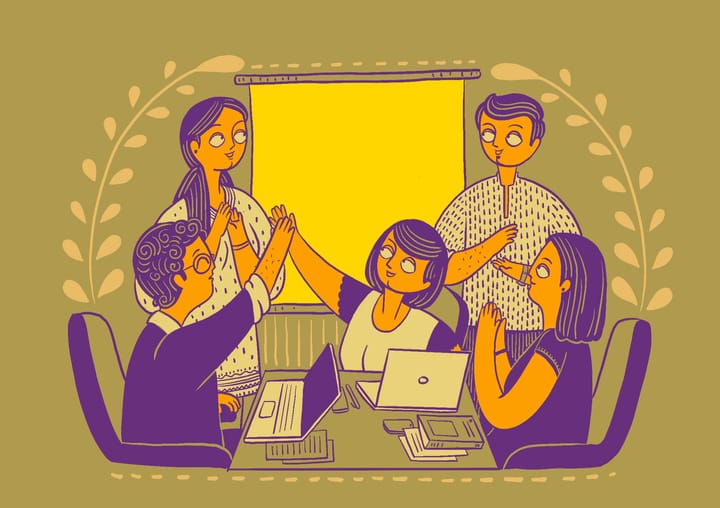Are You Getting the Expected Returns on Your Employee Assistance Programme?
Asking these pointed questions will help you evaluate whether your EAP is working for you

Last year, a study found that just 15% of India’s workforce is covered by some kind of corporate health or wellness programme. But with increasing awareness about the need to support employees’ wellbeing, companies have started tying up with service providers, including EAPs or employee assistance programmes.
In previous articles, we looked at the challenges of the EAP service model, and why they may not be a holistic solution for companies’ wellbeing needs. In this article, we ask important questions about the returns on investment (ROI) on EAP services. The following questions can guide companies when picking an EAP vendor or when assessing the effectiveness of an existing partner.
Question 1: Does Your Wellness Partner Proactively Engage Your Employees?
EAPs often are set up for fixed periods and use problem-solving approaches. These may address concerns and issues of the employee in the present, but do not seek to build their wellness proactively or in the long term.
Your ideal partner must be able to build a culture of wellness, regardless of current distress levels. This means the approach needs to be preventive by design. This also contributes to normalising mental health care as well as more utilisation of the wellness services provided.
Fun Ways and Ideas to Boost Morale at Work
Question 2: Does the Programme Build Your Employees’ Capacity for Self-care?

EAPs typically offer short-term counselling sessions and address employee concerns in individual settings. However, it is also important for employees to be equipped with tools or information to support themselves; like grounding techniques for anxiety or understanding the need for medication. These empower individuals and help them in the long run.
Larger factors that also impact the mental health of employees need to be identified. These could be their relationships with colleagues or difficulty managing their work expectations, to name a few. Helping employees practice skills like assertiveness or setting boundaries can improve their immediate and long-term work lives. As mentioned above, incorporating such skill-building sessions for all employees contributes to an organisational culture of wellness.
Try Manah's free emotional wellbeing assessment now!
Question 3: Is the Partner Offering a Sustainable, Long-term Solution?
EAPs are third-party services provided to the company for a certain duration. There is the possibility of the service being stopped or changed, which can affect the wellness of those availing the programme – and the organisation needs to be prepared for such a situation.
Thus, to build sustainability and develop a wellness culture, mental health conversations should happen laterally, and additional capacity needs to be created within the company. This encourages help-seeking behaviour even in the absence of an EAP.
Our previous article talks about how companies can train employees to be Wellness Champions for long-lasting change in the attitude towards workplace wellness.

Question 4: How Accessible and Transparent are the Services Provided by the Partner?
The accessibility of a service influences its rate of utilisation. Accessibility in this situation includes different components like – whether employees know about the services and their benefits; how easy it is to access those services; the availability (days and timings); and the affordability of these services.
EAPs also may lack transparency regarding the professionals who are delivering counselling, training, etc., which may deter employees from utilising or participating in the programme. Some of these factors like availability may be pre-determined by the EAP or the company, but other factors like transparency require consistent efforts to build employee engagement.
Ideas to Improve the Health and Wellness of Your Employees
Question 5: Is the Partner Guided by Data and Analytics?
Much of the data on workplace mental health interventions are from high-income countries where industrial development grew structurally over decades and where companies prioritise workplace health. However, the evidence on the effectiveness of these interventions in India is still limited. There is also a lack of empirical evidence on the cost effectiveness of EAPs or their impact on reducing absenteeism.
How can you navigate this gap in data?
- Have an open conversation with your EAP provider to understand how they use data-driven practices.
- Ensure periodic and consistent methods of data collection. This can include checking for number of service-users (anonymous self-report assessment for counselling), self-assessment after using a service, feedback for workshops, and through surveys.
- If possible, support funded research to address the larger gap in workplace mental health data.
Question 6: Does Your EAP Partner Seek and Incorporate Your Feedback?
Working with a wellness partner often requires some customisation and adjustments until the needs of employees are met. This means consistently evaluating interventions (as mentioned above) and implementing given feedback. This helps employees to feel heard while also receiving more tailored support. It requires regular conversations and combing through data by the EAP and the company together, and ideation, to provide the best for your employees.
Workplace mental health requires ‘all-hands-on-deck’ to make it wholesome. This means, making an informed-choice and assessing whether that meets your expected outcomes, becomes the most crucial step to encouraging employee wellness.



